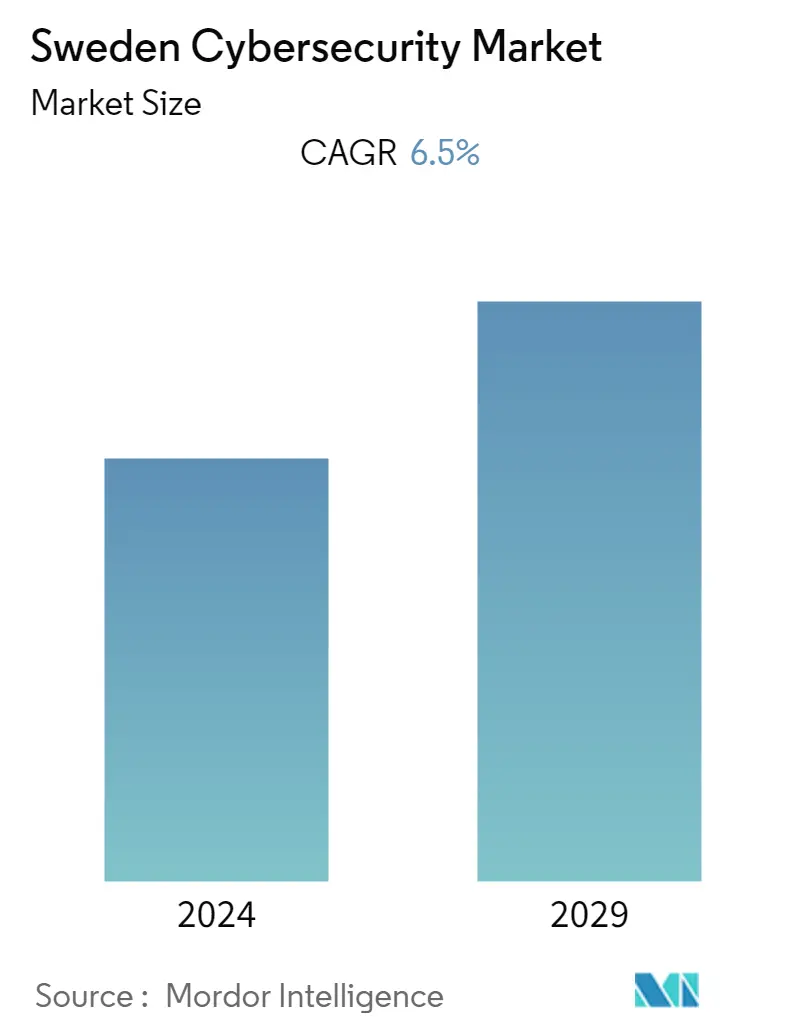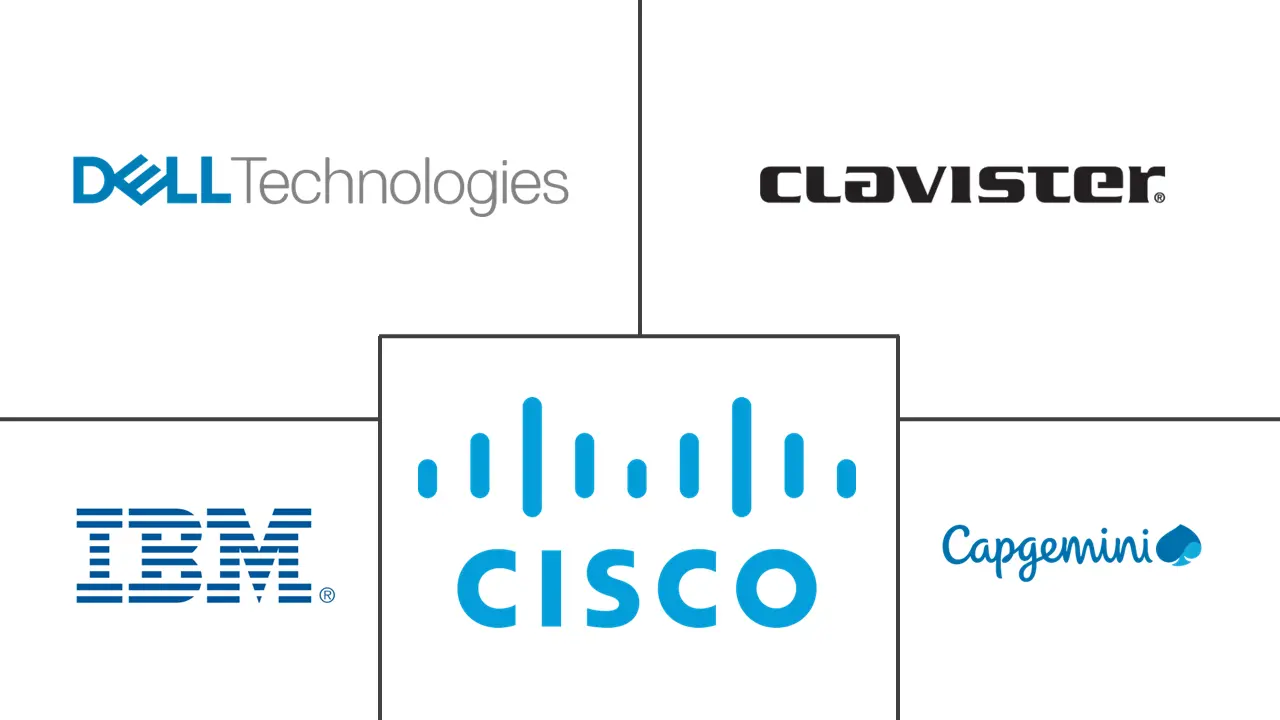Market Size of Sweden Cybersecurity Industry

| Study Period | 2019 - 2029 |
| Base Year For Estimation | 2023 |
| Forecast Data Period | 2024 - 2029 |
| Historical Data Period | 2019 - 2022 |
| CAGR | 6.50 % |
| Market Concentration | Medium |
Major Players
*Disclaimer: Major Players sorted in no particular order |
Need a report that reflects how COVID-19 has impacted this market and its growth?
Sweden Cybersecurity Market Analysis
The Sweden Cybersecurity Market is anticipated to grow with a CAGR of 6.5 % during the forecast period (2022 - 2027). The most crucial applications in the IT environment are cyber security solutions since they guard against unauthorized access and improper behavior and safeguard data, computers, programs, and networks. The rapid development of new technologies and trends has led to an increase in cybercrime in recent years. Cybercriminals can use any small security weakness to access sensitive data belonging to customers or companies, which they then sell on the black market or in foreign nations.
- The establishment of a National Cybersecurity Center, headed by the Swedish Civil Contingencies Agency (MSB), Swedish National Defense Radio Establishment (FRA), Swedish Armed Forces, and Swedish Security Service (SPO), was announced by the Swedish government in December 2020. The Swedish Post and Telecom Agency (PTS), the Swedish Criminal Investigation Service (RKP), the Swedish Defense Materiel Administration (FMV), the Swedish Certification Body for IT Security (CSEC), and the Military Intelligence and Security Service will all help them. The center will be fully developed by 2023.
- Cyber security firms are developing AI-powered security solutions to assist businesses in automating their IT security. By enabling automated threat detection and mitigation, these solutions let IT professionals spend less time and effort detecting malicious behaviors. These technologies provide real-time monitoring, new threat detection, and autonomous response. This lowers the cost of security incident response by enabling the security teams to study the breach information that has been filtered and to identify and address cyberattacks more quickly.
- Today's digital revolution heavily depends on gadget connectivity for data exchange and self-control. A high-performance network is needed to do this successfully, and 5G (or possibly 6G) technology is well suited for the task. Given how dependent a smart city is on telecommunications and how everything is connected, many governments have declared 5G networks essential to the country's infrastructure. Their security is becoming a matter of national security. In other words, "security by design" is necessary for a safe 5G network since it addresses security issues early.
- Most of these threats have intensified because of the opportunities during the COVID-19 outbreak. The fact that some small and medium-sized businesses adopt a "Bring Your Device" (BYOD) strategy (as opposed to a "Corporate Owned Personally Enabled" (COPE) strategy) and permit employees to access corporate data using their devices (phones, tablets, or laptops) may be one of the causes of the rise in cyberattacks. The same level of cybersecurity is not provided when working from home as in an office setting. Users are more vulnerable to cyberattacks while accessing corporate files and data on a personal computer or laptop (even with the security of an MDM system). For instance, employees might not use antivirus or anti-malware.
- Over the past few years, the security systems have focused on making it difficult for attackers to reach critical data. Some would say that even this has not happened. As a result, the ordinary user is increasingly wary of the security of the Internet. Solutions that may have worked a few years ago are irrelevant now. Organizations need several resources to identify and recover from cyberattacks and be highly prepared. In many cases, the organization might need to shut down its operations for days to recover from a breach or attack. With poor planning and inadequate infrastructure, the time to recover from an incident may be considerably high.
